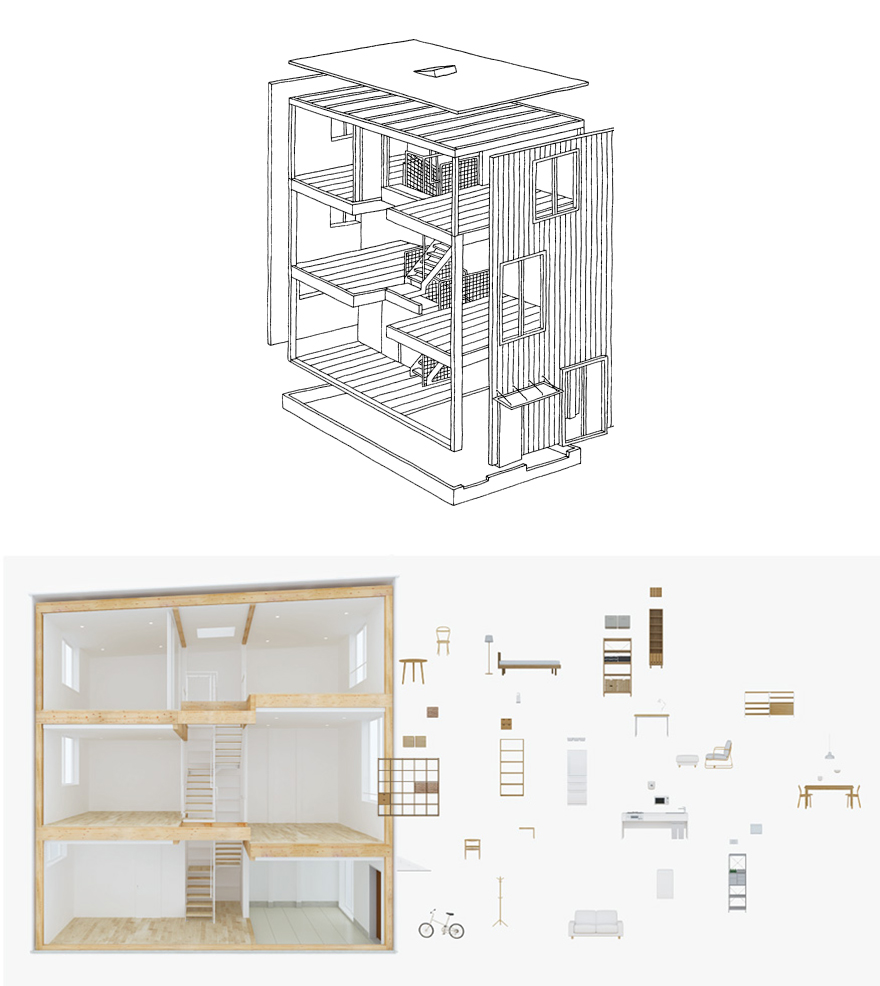![WordtotheWives.jpg]() Via "A Word to the Wives" (1955)
Via "A Word to the Wives" (1955)
Yep, that's right. I'm tweaking a little bit Louis Sullivan famous quote, "Form ever follows function," here.
Functionalism.
In 1896, Chicago architect Louis Sullivan coined the phrase 'form ever follows function' to capture his belief that a building's size, massing, spatial grammar and other characteristics should be driven solely by the function of the building. The implication is that if the functional aspects are satisfied, architectural beauty would naturally and necessarily follow.
This approach trickled down to various design disciplines over the course of the 20th Century, but designers realized—through overly functional design attempts—that function should definitely be considered as a key part of the design strategy but never its sole driver. The Post-war kitchen design is a great example of how functionalism can get in the way of human behavior.
During the years following the war, womens' role in society changed drastically. During the conflict, women were regarded as an important element of the workforce and became an essential part of the warfare apparatus. After the war it has become obvious that this marked a major social shift. In order to accommodate the new family dynamics, the kitchen needed to be redesigned. Lots of ethnographic studies were conducted and a full range of proposals to optimise activities and movement in the kitchen were conceived. This seemed like a great idea—and it still does, if you think about it for a minute. If you had the power to minimize the effort and time women spent in the kitchen by nearly 80%, why wouldn't you, right?
Well, problem is, this is not as black and white as it seems. Kitchens, like most things in life, comes in grayer layers of behavioral complexity.
I mean, if you look at it solely via the lens of reductionism then the full-throttle / all-in, optimization approach may appear like the perfect idea... except that reductionism kills behavior.
Reductionism is an old scientific philosophy, which can be traced, between others, to René Descartes. It states that a complex system is nothing but the sum of its parts, and that it can be completely mapped and understood, in its whole, via the individual study of each part. It is the diametric opposite of what we designers call "gestalt." Gestalt means "the whole is bigger than the sum of its parts." Reductionism is, therefore, the extreme opposite to design itself. Design in its "bauhausian" mother language, German, spells gestaltung.
The problem with reductionism—the "black and white" approach—is that, when dealing with complex, wicked problems, the sum of the parts never explains the behaviour of the whole. And, trust me, in a service economy, everything is a bit wicked.
For instance, take the consumer journey. A consumer journey, in a service experience, is never the result of the sum of all the processes to be touched by the user. People reframe it and give it their own meanings according to their belief systems, expectations and emotional state. This takes place independently of how those processes or transactions were scripted and sequenced to be executed by the provider.
(more...)![]()
















 Process sketches & renders
Process sketches & renders The Team
The Team
















 Via "A
Via "A 










